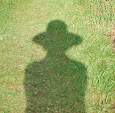Castor canadensis
Sculpture: Canadian Parliament Buildings
However, what I did not know was this:
Melvyn Bragg, BBC In Our Time, said today that "Aesop's Fables presented the myth about beavers sacrificing their own testicles to hunters in the erroneous belief that the testicles were the prize. In fact it is the castoreum in the anal glands which was sought by hunters. Castoreum contains salicylic acid from which aspirin was developed; it is also used as base for perfumes, and in the USA is still used as a food additive."
Source: The Medieval Beastiary
Furthermore, Wikipedia states:
"Within the zoological realm, castoreum is the yellowish secretion of the castor sac in combination with the beaver's urine, used during scent marking of territory.[1][2] Both male and female beavers possess a pair of castor sacs and a pair of anal glands located in two cavities under the skin between the pelvis and the base of the tail.[3] The castor sacs are not true glands (endocrine or exocrine) on a cellular level, hence references to these structures as preputial glands or castor glands are misnomers.[4]"
...and that ....
"In the United States, castoreum as a food additive is considered by the Food and Drug Administration (FDA) to be generally recognized as safe,[11] often referenced simply as a "natural flavoring" in products' lists of ingredients. While it can be used in both foods and beverages as a vanilla, raspberry and strawberry flavoring,[12] the annual industry consumption is around 300 pounds.[13]
Castoreum has been traditionally used in Scandinavia for flavoring snaps commonly referred to as "Bäverhojt".[14]
Castoreum is also used in small amounts to contribute to the flavor and odor of cigarettes.[15]"







No comments:
Post a Comment